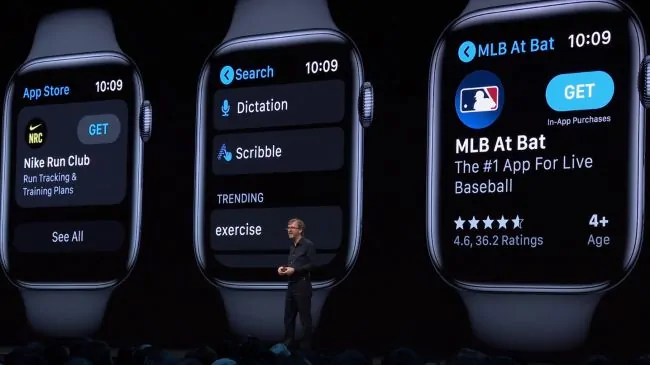According to reports today Apple is planning to move to microLED displays for the next generation Apple Watch.
If so that could mean better battery life. Eventually, per the sources, the energy efficient displays could also make their way to future iPhone models.
In addition to increasing battery life microLED should help Apple reduce case sizes thanks to the displays miniaturization compared to current OLED technology.
According to Wikipedia microLED displays “consist of arrays of microscopic LEDs forming the individual pixel elements. When compared to the widespread LCD technology, microLED displays offer better contrast, response times, and energy efficiency.”
You can read the original report about the potential display switch at the Economic Daily News (Chinese).
Stark Insider’s Take
I’ve been an Apple Watch user for a few generations now. Android Wear and then Wear OS fell so far behind in the wearables war that the Apple Watch even spurred me to switch from an Android phone to an iPhone 7 Plus — a move that I haven’t doubted for a moment over the past few years.
With the recent wildfires and ever present risk of them going forward, air quality is increasingly important to me and my family. Others in the San Francisco Bay Area no doubt feel the same. So in addition to diving deep into research about air purifiers I especially appreciate that I can configure complications on the face that easily enable me to tap through to the weather details for the day. There I can see air quality and UV (also important to know) in addition to other information about the day’s weather and upcoming forecast.
That’s all well and good.
However, Apple Watch still has an Achilles heal: battery life.
Even with the Apple Watch 4 you pretty much need to charge it over night every day. Yes, you can go a little bit more than 24 hours if needed. But I’ve found in daily use that if I track a gym workout, check weather a few times a day, and use the (awesome) Spotify app to control music throughout the day, it will need a charge that evening. Not too big a deal. Apple Watch charges relatively fast. If somehow Apple can extend battery life to match fitness trackers such as the Fitbit Charge and Versa and, say, give us 3-5 days battery life on a charge, that would be sweetness indeed.
It will be interesting to see how a potential switch to microLED impacts battery life on upcoming Apple Watch releases. The move could further distance Apple from the struggling competition (namely Google and Wear OS).


